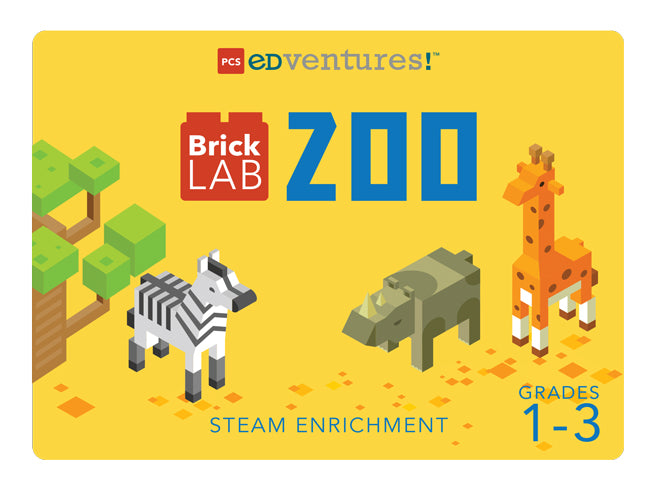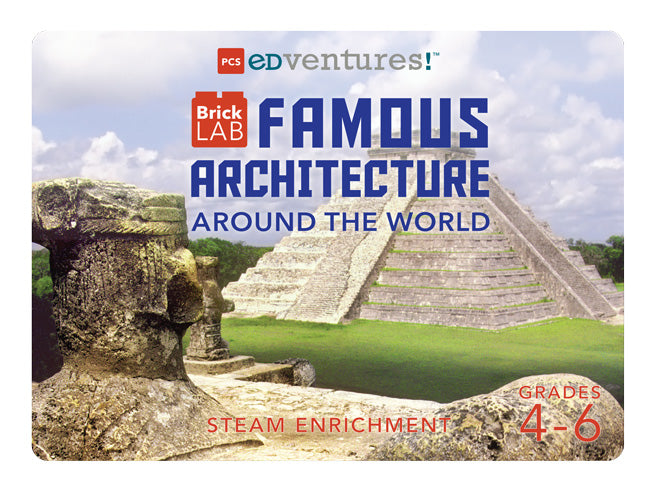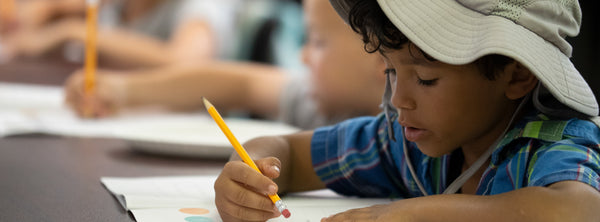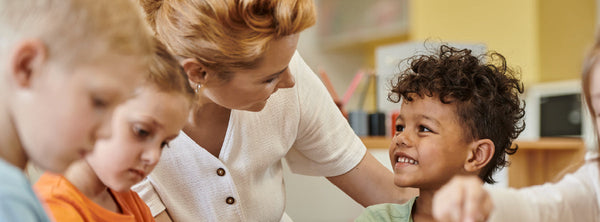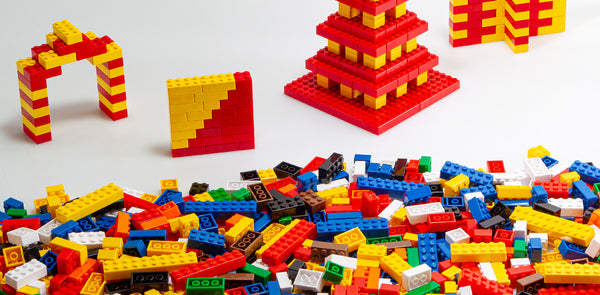
The Many Uses of Building Bricks
To address recent learning gaps, educators across the country are looking for new ways to keep learners engaged. Tying in the latest dance craze or trendy manipulative might work for a bit, but there’s one beloved tool that has proven its relevance and effectiveness time and again.
BrickLAB’s reusable bricks immerse learners in content across subject areas, boosting student engagement and achievement year after year.
Engagement is just the start! Studies show that continual hands-on interactions with building bricks often correlates to stronger spatial reasoning, language and problem-solving skills. BrickLAB connects English Language Arts (ELA), math and social studies topics to captivating engineering design challenges. With numerous cross-curricular lessons, each program offers educators a simple way to accelerate learning.
PCS Edventures has a myriad of products that will bring this well-rounded curriculum into your program. Here, we’ll focus on three outstanding BrickLAB programs:
Each program uses our signature “Perfect Brick” to bring concepts to life. Proven and tested worldwide for more than a decade, these durable and easy-to-implement manipulatives won't stay in their tubs for long. You’ll be amazed by this classic tool’s versatility and value.
Build Up Student Achievement with BrickLAB
Bricks Accelerate Learning
Manipulative-based instruction is the best way to accelerate learning. In one study, a high school chemistry teacher taught the same concept to three groups of learners in three different ways. The learners tasked with building brick models performed significantly better on post-lesson evaluations compared to those who learned through conventional lectures or virtual online games (Ruddick 2012). This suggests that interacting with material directly impacts learners’ understanding and helps them retain information.
For example, BrickLAB Core brings science, math, social studies and literacy into the three-dimensional world with twelve hands-on lessons per grade level. Whether you're using a single curriculum or the Ultimate Set (grades 1-6), your learners will have access to hours of high-quality curricula designed to integrate instructional goals into application-based learning experiences.
In addition, BrickLAB Core aids in the retention of new concepts by exposing learners to core knowledge repeatedly in creative ways. Encountering skills in a variety of ways boosts understanding without sacrificing engagement.
English Language Arts Connections
As with brick building, imagination and creativity are cornerstones of reading and writing. It’s no surprise then that bricks and literacy go so well together!
BrickLAB Core puts ELA center stage in three of its twelve cleverly-crafted lessons per grade level. From parts of speech and sentence types to story mapping and persuasive writing, this program makes a traditionally auditory subject more accessible with kinesthetic learning. Even complex concepts like cause and effect can be simplified with bricks! For more information about specific skills addressed within each grade level, visit the product page.
PCS Edventures products also feature a wide variety of ELA extensions. In BrickLab Zoo, learners use bricks to explore biodiversity. After building a caravan of camels, acrostic poems that highlight facts about how camels survive in desert climates encourage deeper learning. Have learners write a short story about their brick animal creations featuring their unique adaptations. Extensions offer a wide variety of creative ways to incorporate literacy instruction with ease. Your learners will love bringing their many animal builds to life through storytelling, poetry and more.

ELA extensions are included for your upper elementary learners too! BrickLAB Famous Architecture encourages them to explore literature that connects to the construction, time period or geography of a well-known structure. For instance, while discovering the impressive design of the Eiffel Tower, why not write a sonnet depicting the architect's admiration for his creation? After building bridges, try reimagining a classic fairytale in which characters must cross a bridge despite a treacherous challenge. It’s easy to connect literacy skills to brick creations in a meaningful way with PCS Edventures.
Math Connections
A handful of bricks is a powerful math tool. Start describing each brick by color or shape, and mathematical thinking is already at play! From sorting activities to identifying arrays (a 2x4 brick, for example), bricks are a great way to interact with math skills throughout the day.



While bricks are perfect for centers or free time, PCS Edventures has several ready-made, full lessons for your budding mathematicians. Hands-on activities motivate learners to interact with the material in a tangible and relatable way.
BrickLAB Core (grade 4), for instance, includes “Hinge Building Plans” which teach learners how to build a model that can be manipulated repeatedly. Suddenly, angles and lines are more than just marks on a worksheet. Such activities create opportunities for discovery and have noticeable impacts on learners’ understanding.
Click to check out the many math topics covered within BrickLAB Core’s Ultimate Set.
Like the ELA Extensions, BrickLAB Zoo and BrickLAB Famous Architecture also feature grade-level appropriate math extensions within each lesson. Use these extra activities to accelerate learning during the lesson or as a breakout activity. Extensions can benefit all learners, advanced or struggling, because they encourage divergent thinking. Showing learners multiple solutions to a problem helps build self-confidence and promotes a strong mathematical mindset.
Conclusion
A multifaceted approach to accelerating learning, bricks are the hands-on tool you’ll use year after year. Immerse learners in exciting cross-curricular lessons or have them explore concepts through play and self-discovery. With so many uses for PCS Edventures’ “Perfect Bricks,” it’s easy to build a year full of fun and valuable learning experiences.
How do you use bricks with your learners?
Share your ideas in the comment section below!

Author: Jessica Ventre
An experienced elementary educator and science instructional coach, Jessica’s passion for STEM instruction and student-led learning is always at the forefront of her lessons and professional development workshops.


